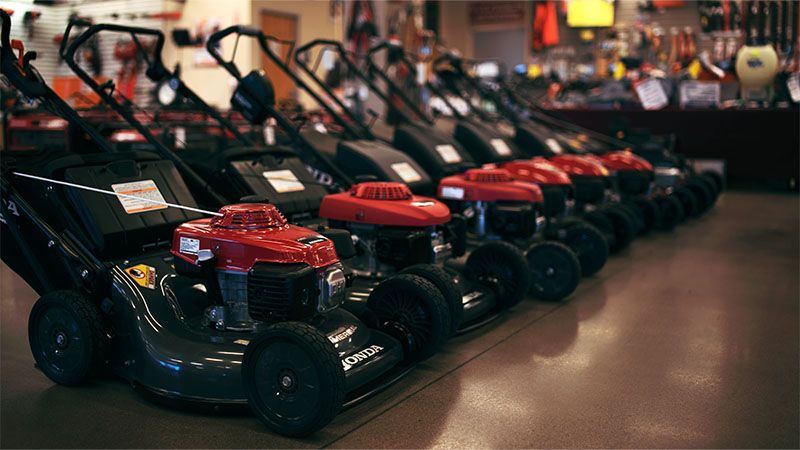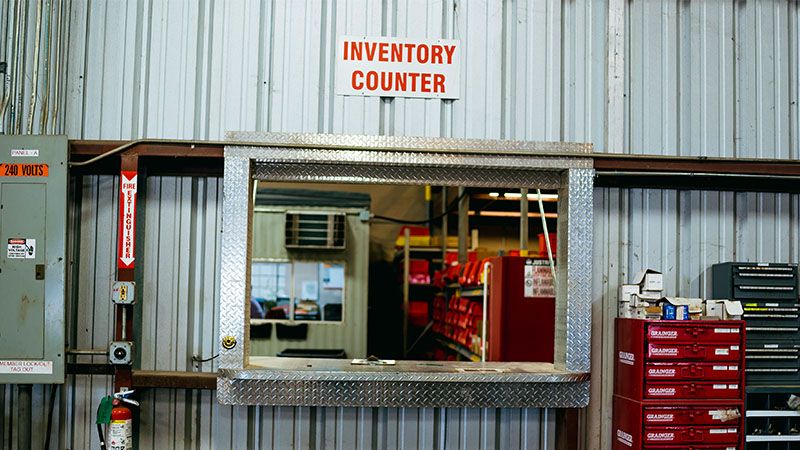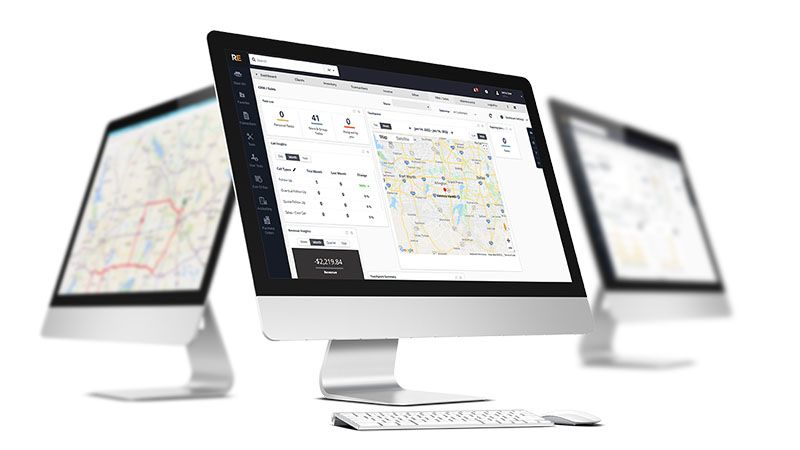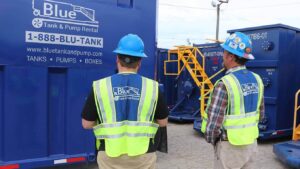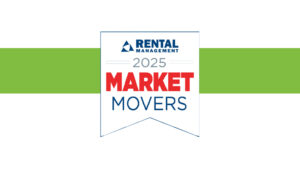Efficient inventory tracking is critical to success in the rental industry. Whether you’re managing equipment rentals for construction projects or orchestrating memorable events, having a solid grasp on your inventory is the only way to meet your customers’ demands, maximize profits, and maintain a seamless operation.
Why Inventory Tracking Matters
If I ask you how many skidsteers or 20’x10’ tent canvases you have available to rent, you could go check your lot or warehouse and count.
But to be effective and efficient when you’re allocating resources, you need to know not only what you have on your lot, but what you have on rent, in maintenance, and in transit. If you have more than one location, you’ll need to know where everything is at each of those locations. And of course, in rental, you’ll need to know when each item will be available.
That’d make for a heck of a lot of counting.
Without a proper system in place to manage your inventory, you’re wasting resources, promising items that aren’t available, and frustrating your customers. Delays, errors, and misunderstandings crop up, your online reviews take a hit, and you’re struggling to succeed, despite your best intentions.
Inventory tracking tools allow you to make informed decisions, prevent overbooking, and keep your rental items in optimal condition.
Techniques for Successful Inventory Tracking
There are a few basics to take care of before you start searching for the perfect inventory management software:
Categorize Your Inventory
First, categorize your inventory based on factors like type, size, and demand. This step lays the foundation for more effective tracking and helps you prioritize items with high turnover. Using easy-to-understand names, consistent storage locations, and keeping similar items near each other will make it much easier to see what’s available and what isn’t – both on your lot and in a spreadsheet.
Regular Audits and Cycle Counts
When business gets busy, it’s easy to set items aside, then forget to go back and put them where they belong. Maybe you’ve pulled items to stage them for a pickup of an order that got canceled. Or a customer dropped off a trailer in the wrong place, so no one’s checked it back in.
Even after you’ve implemented inventory tracking tools, you’re still going to need to verify items are where they’re supposed to be. Perform regular audits and cycle counts to help maintain the accuracy of your inventory data. Schedule periodic checks to reconcile physical counts with the data in your system. By being proactive, you’ll minimize discrepancies and ensure that your records align with the actual stock on hand.
Barcodes, RFID, and GPS Tracking
Barcoding simplifies the tracking process significantly. Assign unique barcodes to each item, enabling quick and accurate identification. Inventory management software often integrates seamlessly with barcode systems, too, making a future transition easier.
For those seeking a more advanced solution, Radio-Frequency Identification (RFID) technology offers real-time tracking without the need for line-of-sight scanning. This can be especially beneficial for large-scale rental businesses with extensive inventories – particularly in the event industry, where you’ll often have dozens or hundreds of dishes or linens on an order. RFID tags make counting in your returns a breeze, saving several hours of counting a month.
When your inventory isn’t on your lot (or if you have a large lot, or multiple lots) – whether it’s on a job site or in a delivery truck – GPS tracking can help you keep track of it. You can see exact locations of items, their speed, their usage, etc. – all of which helps you determine when/if maintenance is needed and how to best maintain your uptime.
Tools to Enhance Inventory Tracking
If you’re like thousands of other rental businesses who have started collecting their inventory data…you’ll quickly realize the value of inventory tracking tools that organize and integrate it.
Investing in specialized inventory management software tailored for rental businesses can streamline your processes incredibly. These platforms often offer features such as real-time updates, reporting capabilities, and integration with other business systems. Typically, they’ll integrate with your barcode or RFID readers, allowing you to really capitalize on their use.
There are a lot of things to consider when you’re looking for a rental and inventory management software. Here are two key features that’ll make inventory management more flexible for you:
Cloud-based inventory management solutions provide accessibility from anywhere with an internet connection. This is great for rental businesses with multiple locations or those embracing remote and hybrid work. It also opens up new opportunities when you’re not on the clock – maybe you’re at a conference, a networking event, or even just generally socializing and you overhear someone with a need for your inventory. With cloud-based inventory management software, you’re able to not only suggest your services, but generate a quote and maybe close a deal.
You’ll also want to equip your team with mobile applications that allow on-the-go access to inventory information. Access to the whole software is great, but apps allow for direct access to the parts of the software your team needs, immediately. This empowers staff to update records, track items, and manage reservations directly from the field, enhancing your overall efficiency.
“(Always) be prepared” is the Boy Scouts’ motto. Others say “Always be closing.” Cloud-based rental software and mobile apps help you do both.
Industry Standards and Compliance
Depending the inventory you’re stocking, there may be additional things to think about when keeping track of your inventory.
Legal Considerations
Compliance with industry regulations is crucial for rental businesses. Ensure that your inventory tracking practices align with legal requirements, especially when dealing with specialized equipment or items subject to specific safety standards. Rental software will often help you maintain those critical documents digitally, attaching them to relevant contracts or items for easy reference in the future.
Standardizing Processes
Establish standardized procedures for tracking inventory across your organization. Consistency in data entry, categorization, and tracking methodologies ensures that everyone in your team follows the same guidelines, reducing the risk of errors.
Training Your Team
Once you’ve established standardized procedures, you’ll need to invest in training programs to familiarize your team with your chosen inventory tracking tools and processes. Well-trained staff are more likely to use the system correctly, reducing the likelihood of errors and ensuring a smoother operation. It also makes it easier to bring new people into your organization as you grow, because they’re getting the same message from everyone on staff.
Realizing the Benefits
Awesome. You’ve started tracking your inventory! Make sure you’re keeping track of the benefits you and your business are experiencing:
Increased Efficiency
Efficient inventory tracking translates to time saved and reduced operational costs. With a streamlined system in place, your team can focus on delivering exceptional service rather than heading out to the warehouse or the lot (or calling the office and asking someone else) to check if an item is available.
Better Customer Service
Knowing the availability and condition of your rental items in realtime enables you to provide accurate information to customers. There’s nothing better than working with someone who you know is going to deliver on all of their promises, and when you have accurate data, you’re never promising more than you can handle.
Improved Decision-Making
Access to accurate, up-to-date inventory data empowers you to make informed decisions. You’re better able to see the items that aren’t renting, what’s breaking down too often, and what’s boosting your utilization and ROI. You’re optimizing your stock levels based on data and preparing for peak seasons in your area. Many rental stores even use seasonality to increase customer loyalty – reaching out to past renters of seasonal items as the season is coming up again to encourage them to book in advance.
Happier, More Productive Staff
No one likes feeling stupid or like they’re making mistakes. By implementing best practices, using modern tools, and adhering to industry standards, you’re making your team’s job easier. They’re able to communicate confidently with customers. They’re empowered to find solutions, because they know better what’s available to meet customer needs and where to find it, even if the original request can’t be filled.
Investing in the right inventory tracking solutions pays huge dividends for everyone associated with your business. It both allows you to act confidently today and sets you up for a successful future.
If you’d like to get started with Point of Rental to find an inventory management software that fits your needs, book a demo or call 844-943-7368.

